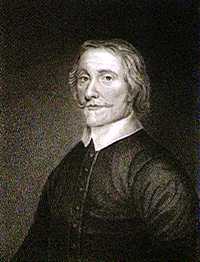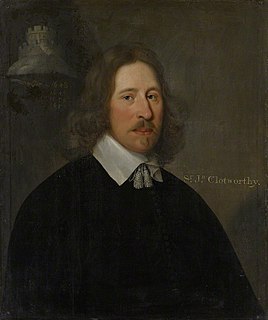Related Research Articles

Earl of Lucan is a title which has been created twice in the Peerage of Ireland for related families.

Earl of Limerick is a title that has been created twice in the Peerage of Ireland, associated first with the Dongan family, then with the Pery family.

Earl of Roden is a title in the Peerage of Ireland. It was created in 1771 for Robert Jocelyn, 2nd Viscount Jocelyn. This branch of the Jocelyn family descends from the 1st Viscount, prominent Irish lawyer and politician Robert Jocelyn, the son of Thomas Jocelyn, third son of Sir Robert Jocelyn, 1st Baronet, of Hyde Hall. He notably served as the Lord Chancellor of Ireland from 1739 to 1756. In 1743, he was raised to the Peerage of Ireland as Baron Newport, of Newport, and in 1755 he was further honoured, when he was made Viscount Jocelyn, also in the Peerage of Ireland. He was succeeded by his son, the second Viscount. He represented Old Leighlin in the Irish House of Commons and served as Auditor-General of Ireland. In 1770 he also succeeded his first cousin once removed as fifth Baronet of Hyde Hall. In 1771 he was created Earl of Roden, of High Roding in the County of Tipperary, in the Peerage of Ireland. Lord Roden married Lady Anne Hamilton, daughter of James Hamilton, 1st Earl of Clanbrassil and sister of James Hamilton, 2nd Earl of Clanbrassil, a title which became extinct in 1798.

Earl of Rosse is a title that has been created twice in the Peerage of Ireland, both times for the Parsons family. "Rosse" refers to New Ross in County Wexford.

Earl of Verulam is a title in the Peerage of the United Kingdom. It was created in 1815 for James Grimston, 4th Viscount Grimston. He was made Viscount Grimston at the same time. Verulam had previously represented St Albans in the House of Commons. In 1808 he had also succeeded his maternal cousin as tenth Lord Forrester. He was succeeded by his son, the second Earl.

Viscount Valentia is a title in the Peerage of Ireland. It has been created twice. The first creation came in 1621 for Henry Power. A year later, his kinsman Sir Francis Annesley, 1st Baronet, was given a "reversionary grant" of the viscountcy, which stated that on Power's death Annesley would be created Viscount Valentia. Annesley, a member of an influential Anglo-Irish family which descended from Newport Pagnell in the County of Buckinghamshire, was a favourite of James I, who granted him land in Ireland, notably the fort of Mountnorris in County Armagh. He was knighted in 1616, created a baronet, of Newport Pagnell in the County of Buckingham, in the Baronetage of Ireland in 1620 and Baron Mountnorris, of Mountnorris in the County of Armagh, in 1628.

Viscount Massereene is a title in the Peerage of Ireland. It was created in 1660, along with the subsidiary title of Baron Loughneagh. From 1665 to 1816 the Skeffington Baronetcy of Fisherwick was attached to the viscountcy and from 1756 to 1816 the Viscounts also held the title of Earl of Massereene. Since 1843 the peerages are united with titles of Viscount Ferrard, of Oriel and Baron Oriel, both in the Peerage of Ireland, and Baron Oriel, in the Peerage of the United Kingdom. The Viscount also holds the subsidiary titles of Baron Loughneagh (1660) and Baron Oriel (1790) in the Peerage of Ireland and Baron Oriel (1821) in the Peerage of the United Kingdom. As Baron Oriel, he sat in the House of Lords until 1999.

Viscount de Vesci, of Abbeyleix in the Queen's County, now called County Laois, is a title in the Peerage of Ireland. It was created in 1776 for Thomas Vesey, 2nd Baron Knapton and 3rd Baronet. The title Baron Knapton was created in the Peerage of Ireland in 1750 for the first Viscount's father, John Vesey, 2nd Baronet, who had earlier represented Newtownards in the Irish House of Commons. The baronetcy, of Abbeyleix in the Queen's County, was created in the Baronetage of Ireland on 28 September 1698 for the first Baron's father, Reverend Thomas Vesey, Bishop of Killaloe (1713–1714) and Bishop of Ossory (1714–1730).

There have been ten baronetcies created for persons with the surname Browne, six in the Baronetage of Great Britain, three in the Baronetage of Ireland and one in the Baronetage of Nova Scotia. Only one creation is extant as of 2010. Three of the creations were for members of the Browne family headed by the Viscount Montagu.
There have been three baronetcies created for persons with the surname Everard, one in the Baronetage of Ireland, one in the Baronetage of England and one in the Baronetage of the United Kingdom. Only one creation is extant as of 2010.

William Tirry OSA was an Irish Roman Catholic priest of the Order of Saint Augustine. He suffered martyrdom in Clonmel in the context of the Cromwellian conquest of Ireland. Pope John Paul II beatified him in 1992.

The chief justice of the Common Pleas for Ireland was the presiding judge of the Court of Common Pleas in Ireland, which was known in its early years as the Court of Common Bench, or simply as "the Bench". It was one of the senior courts of common law in Ireland, and was a mirror of the Court of Common Pleas in England. The Court of Common Pleas was one of the "four courts" which sat in the building in Dublin which is still known as the Four Courts, apart from a period in the fourteenth century when it relocated to Carlow, which was thought to be both more central and more secure for the rulers of Norman Ireland.
Dominick Sarsfield, 1st Viscount Sarsfield of Kilmallock was an Irish peer and judge who became Chief Justice of the Irish Common Pleas, but was removed from office for corruption and died in disgrace.
The chief justice of Munster was the senior of the two judges who assisted the lord president of Munster in judicial matters. Despite his title of Chief Justice, full judicial authority was vested in the lord president, who had "power to hear and determine at his discretion all manner of complaints in any part of the province of Munster", and also had powers to hold commissions of oyer and terminer and gaol delivery.
Sir John Meade, 1st Baronet (1642–1707) was an Irish barrister, judge and politician. He was the first of the Meade Baronets of Balintubber, and an ancestor of the Earls of Clanwilliam. He was unusual among the lawyers of his time for his lack of ambition to become a judge of the High Court, despite being generally regarded as a barrister of "excellent parts (qualities)". In matters of religion, he seems to have been, by the standards of his time, a man of very tolerant views: although he was himself a Protestant, he damaged his career by marrying Elizabeth Butler, who was a Roman Catholic, as his third wife.
Anne Sarsfield, Viscountess Sarsfield was an Irish aristocrat of the 16th and 17th centuries. She was born Anne Bagenal, and should not be confused with her niece Anne Bagenal the daughter of her brother Henry.
Patrick Sarsfield was an Irish landowner and soldier of the seventeenth century noted for his role in the Irish Confederate Wars. He is best known as the father of Patrick Sarsfield, Earl of Lucan, and is sometimes referred to as Patrick Sarsfield the Elder because of this.
Ulick Burke, 1st Viscount Galway was an Irish army officer who was slain at the Battle of Aughrim while fighting for the Jacobites during the Williamite War in Ireland.
Dominick Sarsfield, 4th Viscount Sarsfield was an Irish aristocrat and supporter of the Jacobite cause during the Williamite War in Ireland.
Sir Lawrence Parsons was an English-born barrister, judge and politician in seventeenth-century Ireland, who enjoyed a highly successful career, despite frequent accusations of corruption and neglect of official duty. His success owed much to the patronage of his uncle Sir Geoffrey Fenton, of his cousin by marriage Richard Boyle, 1st Earl of Cork, and of the prime Royal favourite, the Duke of Buckingham. He was the ancestor of the Earl of Rosse of the second creation. He rebuilt Birr Castle, which is still the Parsons family home.
References
- ↑ Ball, F. Elrington The Judges in Ireland 1221–1921 John Murray London 1926